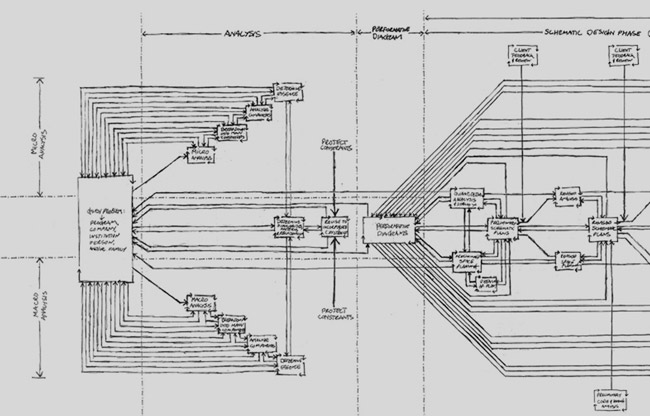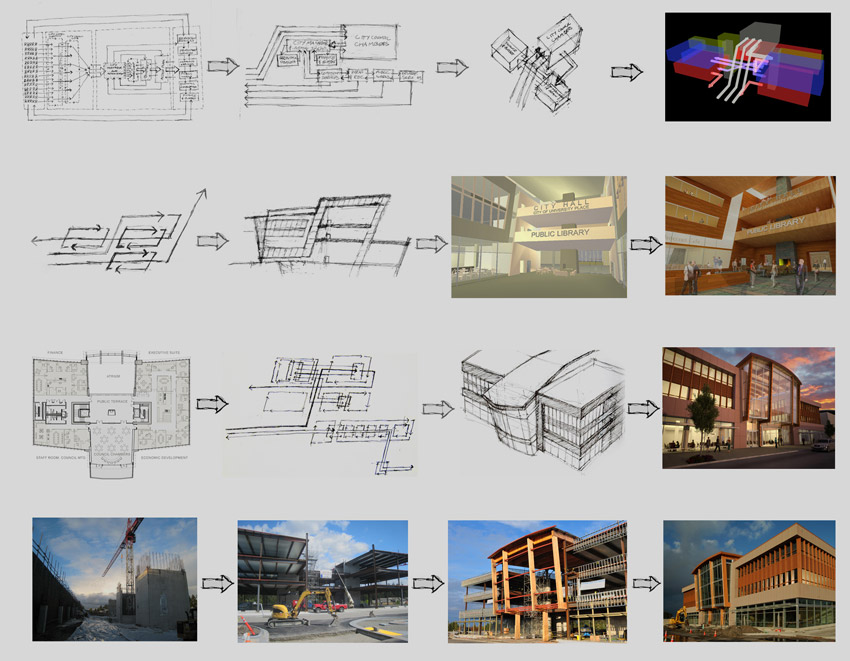Most architecture firms focus either on aesthetics, or the purely practical. Firms that care only about aesthetics tend to focus only on how something looks and not how well it functions, while firms that focus mainly on the practical, don’t tend to care too much about aesthetics and often neglect the many needs a client’s project has beyond quantitative specs and building codes.
We’ve decided to break that mold and turn this model inside out, creating a completely unique, collaborative and client-focused design process to bring projects to life. Good design is so much more than bringing together a set of specs and construction documents. Extraordinary buildings and spaces don’t “just happen” – they are created through an integrated and in-depth process in which the architect comes to truly understand the client, their vision, and their needs…and then integrates all of this information into an extraordinary design that transcends the specs.

ANALYSIS
Our process starts with an in-depth analysis phase, where we work with you to understand the many layers and interwoven relationships occurring within your project. This goes far beyond the more typical quantitative or technical approach that most firms use – here we seek to understand the often-complex processes that occur within your organization or lifestyle. We then document our analysis through a series of detailed diagrams that focus on the performative aspects of your project – these are the activities, relationships and movements that occur on a day to day basis. By understanding these activities and relationship as a series of dynamic processes, these performative diagrams visually illustrate the flows and organizational structures that are needed within your project – once these are clearly defined, we design your building or environment around them. These diagrams essentially become a customized roadmap that will guide us through the design process where we can integrate the ideas they contain into everything from the overall concept to the smallest details.

PERFORMATIVE DESIGN
By constantly referring to your performative diagram during the design process, we’re able to ensure the physical designs we develop maintain the flows, elements, and relational structures uncovered during the analysis, regardless of a project’s, size, budget or style. This is especially important because the building process is complex, fast paced and often creates conflicting requirements between codes, construction methodologies and spatial needs.
We design working simultaneously in the computer using state-of-the art BIM software and old-fashioned hand sketching. Working both in 2D and 3D we constantly refer back to the diagrams, seeking to bring a responsive and integrated project to life as we develop our architectural designs and documents.
This method frees us from conventional, “formal” approaches during the design, construction, and value-engineering phases, and helps us create a final building or environment that is truly unique while still being responsive to our client’s needs. We’re able to think outside the box and see the flows and relationships that might not be apparent in more conventional design processes – an approach that often takes us to new and unexpected design solutions. Our final designs reflect and respond to the unique aspects of each client, becoming extraordinary and distinctive buildings and spaces as the result of our innovative design process.

Our firm and it’s unique design process is becoming recognized in the industry with a number of recent awards including: “Innovation in Architectural Services” in the 2017 Architecture Awards by Corporate LiveWire; “Best Progressive Boutique Architectural Firm 2017” in the 2017 Architecture Awards by Build Magazine; and “Best Contemporary Multi-Sector Architecture Firm – New York” in the 2016 Architecture Awards by Build Magazine.